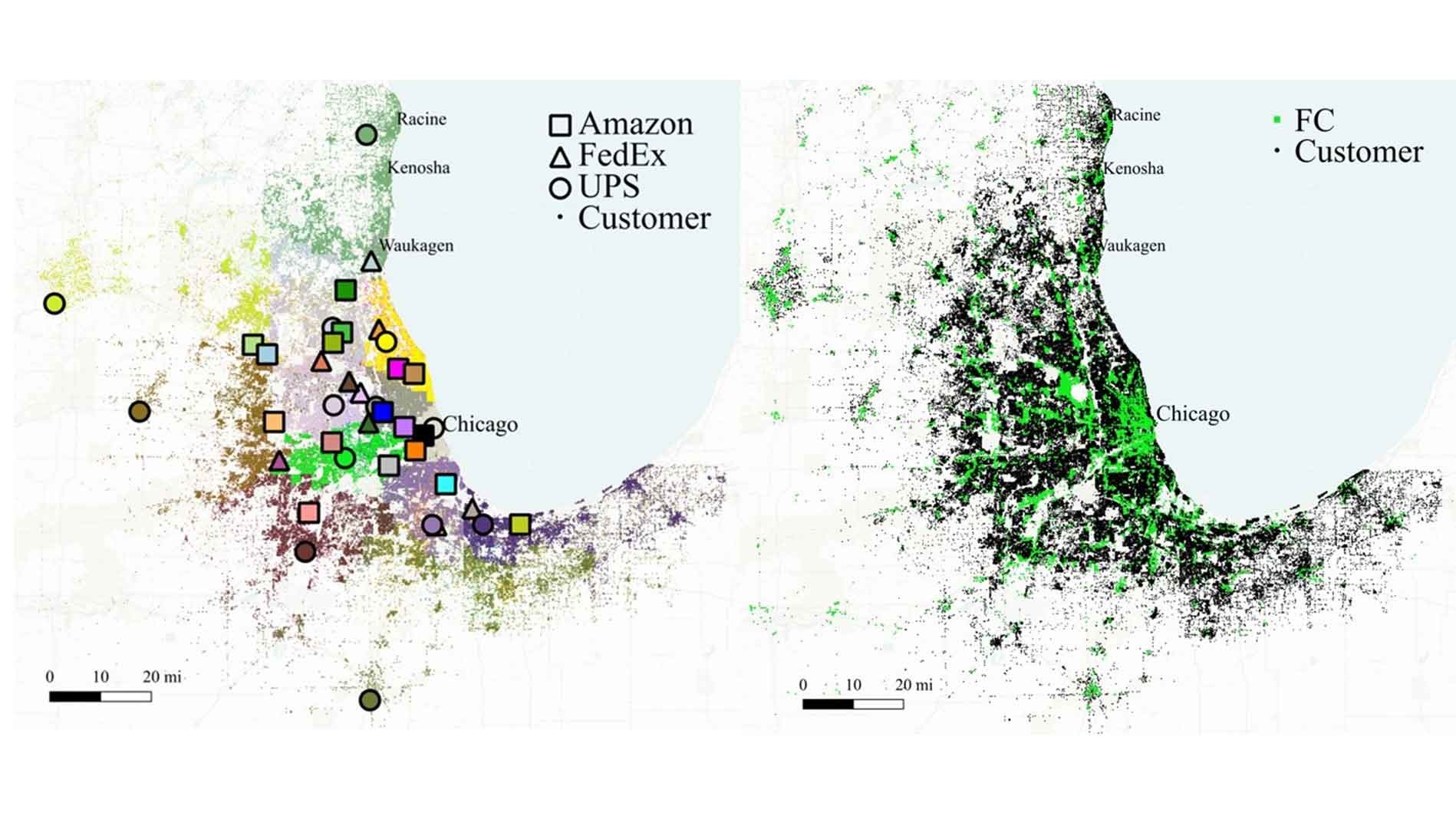Are drones really energy efficient? That depends on the average wind speed. An Argonne study compares drone energy usage to diesel trucks and electric vehicles and aims to help industry determine if they could save money with drone delivery.
What’s the news?
According to a new study from the U.S. Department of Energy’s (DOE) Argonne National Laboratory drones can consume as much as either electric vehicles or diesel trucks to transport e-commerce goods, depending on wind conditions. Argonne has developed new capabilities designed to help industry leaders identify suitable drone delivery locations by comparing the energy consumption of unmanned aerial with conventional diesel and battery electric vehicles.
The models are based on Argonne’s analysis of regional energy consumption and facility costs of direct delivery drones under various wind speed scenarios.
Why is this important?
Analyzing the Chicago metropolitan area, researchers found that on an average day, direct delivery drones required approximately the same energy as electric vehicles. On a very windy day, drones needed 15% more energy than diesel trucks.
“Industry should acknowledge the upcoming energy costs while they make investments into drone delivery.” — Taner Cokyasar, consultant in Argonne’s Transportation and Power Systems division.
Analysis of wind speeds unpacks the story. Drones used less energy than diesel trucks until the wind speed reached 20 miles per hour; however, wind speed needed to reach only 10 miles an hour before drones began to use more energy than electric vehicles. The Chicago study considered extreme cases, where drones would directly face the wind both from the depot to customers and on their return commutes.
Researchers note drone readiness depends not solely on measuring energy consumption but weighing a combination of monetary, environmental and energy factors. Ideal drone deployment could be in tandem with other vehicles — for example, drones released from a truck’s roof for the last mile delivery with advanced vehicle routing algorithms evaluating wind impact to identify optimal drone release locations.
What does the future hold?
Researchers will continue to help companies decide where and how to deploy delivery drones based on uncertain customer demand, weather conditions and technology evolution.
What are people saying?
“Companies should acknowledge the upcoming energy costs while they make investments into drone delivery,” Taner Cokyasar, a consultant in Argonne’s Transportation and Power Systems division.
“This is very exciting research, and we need more research like this to better understand the energy consumption of drones and how best to use them,” Juan Zhang, assistant professor at University of Wisconsin–Eau Claire, wrote on LinkedIn in early January. Her January 2021 paper, “Energy consumption models for delivery drones: a comparison and assessment,” charted a course for the Argonne study by reviewing drone energy consumption models and making difficult to digest complicated models easier to follow.
Where is this new study published?
Cokyasar is co-author of the Chicago metropolitan area drone research paper “Comparing regional energy consumption for direct drone and truck deliveries,” published Jan. 12 in Transportation Research Record Journal by the National Academies of Sciences, Engineering and Medicine. Co-authors are Argonne’s Olcay Sahin, computational transportation engineer; Nirmit Prabhakar, consultant; and Dominik Karbowski, group manager, intelligent vehicle control and low-carbon aviation; and Monique Stinson, a former Argonne researcher now with the Bureau of Transportation Statistics.
This Argonne research was funded by the DOE Vehicle Technologies Office under the Systems and Modeling for Accelerated Research in Transportation Mobility Laboratory Consortium, an initiative of the Energy Efficient Mobility Systems Program.
Argonne National Laboratory seeks solutions to pressing national problems in science and technology. The nation’s first national laboratory, Argonne conducts leading-edge basic and applied scientific research in virtually every scientific discipline. Argonne researchers work closely with researchers from hundreds of companies, universities, and federal, state and municipal agencies to help them solve their specific problems, advance America’s scientific leadership and prepare the nation for a better future. With employees from more than 60 nations, Argonne is managed by UChicago Argonne, LLC for the U.S. Department of Energy’s Office of Science.
The U.S. Department of Energy’s Office of Science is the single largest supporter of basic research in the physical sciences in the United States and is working to address some of the most pressing challenges of our time. For more information, visit https://energy.gov/science.
